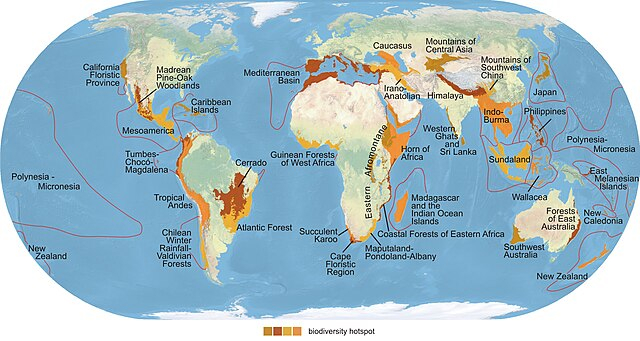Doubling Efficiency in Reducing Species Extinction Risk by Land Prioritization

November 17, 2023
The article you are reading has gone through the rigorous review process administered by Science X's editorial team. The credibility of the content has been confirmed based on the following criteria:
- Fact-verified
- Published through peer-review
- Comes from a reliable source
- Has been proofread
Comes from the International Institute for Applied Systems Analysis
A concerning increase in habitat destruction and species extinction worldwide has led to a new research by an international team of scientists. The team has proposed a new method to select lands for protection which could potentially cut down the risk of species extinction to half as compared to present methods. .cmd.push(function() { .display('div-gpt-ad-1449240174198-2'); });
Protecting crucial ecosystems and habitats is overwhelmingly agreed upon as a vital step in preventing further species extinction. But deciding which areas need to be protected first based on their ecological value becomes a contentious point. The study claims that existing land prioritizing norms overlook essential localized data that is crucial to comprehend how a species interacts with different habitats.
Nicholas Wolff, Director of Climate Science at The Nature Conservancy (TNC) explains that the extinction of a species happens at local level, one population at a time. External factors like land use or management intensity can impact the resilience of individual populations. 'A prioritization model is needed that reflects this basic ecological principle,' adds Wolff.
The team of researchers wanted to demonstrate that a better approach can be adopted by governments and conservation practitioners for future land allocation. The study highlights what could occur if population-level data is also taken into consideration while deciding land priorities. The findings of the study were groundbreaking.
'We discovered that 80% of the world's 'priority habitats for persistence' — the areas on which species facing extinction are highly dependent for their survival — are currently unprotected with just 7.9% strictly protected,' states Piero Visconti, a co-author of the study. Visconti also leads the Biodiversity, Ecology, and Conservation Research Group at the IIASA Biodiversity and Natural Resources Program.
Heini Kujala, a co-author and University Researcher at the Finnish Natural History Museum mentions, 'This is the first such study that identifies priority areas that not only maximise global biodiversity but also ensure persistence on this level and detail.' Kujala hopes this study will inspire innovative conservation strategies around the world and aid in curbing rapidly increasing extinction rates.
The study was published in One Earth. It identifies numerous habitats where augmenting existing conservation protection can significantly bring down the global risk of extinction for a larger number of species. Seven countries including Australia, Brazil, China, Indonesia, Madagascar, Mexico, and Papua New Guinea, are observed to possess over half of the Earth's existing priority habitats for species survival, providing sufficient scope to test the new approach that this study proposes.
The insights from this study are already being utilised by TNC, the largest biodiversity conservation NGO in the world, to identify 'Last Chance Ecosystems,' prioritize conservation focal regions, and guide its overall strategy.
The article was published in the journal One Earth.
The article has been provided by the International Institute for Applied Systems Analysis.




